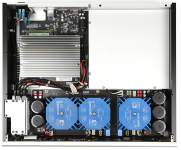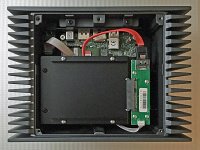I haven’t read what T+A says, but I doubt they would make the elementary mistake of saying the extra noise from DSD is in the audible range (the noise shaping was specifically designed to put it in the ultrasonic range, and it is). As I posted, though, most (all?) tweeters do respond well into the ultrasonic range. Whether or how much the DSD noise will affect the sound is very much open to debate, although T+A has clearly stated their opinion. Note that every DSD sampling rate will have noise shaping, the only difference is at which frequencies the extra noise appears.
I certain might be mis-remembering them saying audible range instead of range that can affect the audible music and/or damage speakers. But the fact remains that they turn off the WIDE function when they detect DSD64, and consider DSD128 or more so DSD256 the minimal level for proper DSD playback. To take advantage of what DSD is all about. And why the heck are you splitting hairs here; it seems like you are trying to make an issue where one does not exist. The bottom line is their view, and mine is that DSD128 is the minimal, and DSD256 or DSD512 is where the amazing benefits of DSD are shown, and why HQPlayer with incredible DACs such as the T+A (among other top flight DACs) are very popular.
From T+A Manual:
"By its nature the DSD format involves a noise floor which rises above
the range of human hearing as frequency rises. Although this noise
floor is not directly audible, it does subject the treble units in the
loudspeakers to a significant load. It is also possible for the high
frequency noise to cause distortion in many low-bandwidth amplifiers.
The lower the DSD sampling rate, the more severe the inherent noise,
and it cannot be disregarded, especially with the 2,8 MHz (DSD64)
format - as used on the SACD. As the DSD sampling rate rises, the
high-frequency noise becomes increasingly insignificant, and with 11,2
MHz (DSD256) it is virtually irrelevant. In the past it has been standard
practice to apply digital and analogue filtering processes in an attempt
to reduce DSD noise, but such solutions are never entirely without side
effects on sound quality. For the DAC 8 DSD we have developed two
special techniques designed to eliminate the sonic disadvantages:
1. The True-DSD technique, consisting of a direct digital signal
path without filtering and noise-shaping, plus our True 1-bit DSD
D/A converter
2. Analogue reconstruction filter with adjustable bandwidth.
The bandwidth cannot be switched to the 'WIDE' mode when
playing DSD files with 2,8 MHz (DSD64). (see section entitled
‘D/A converter settings’)
With thebutton, the bandwidth of the analogue output filter can
be switched between 60 kHz (‘CLEAN’ mode) or 120 kHz ('WIDE'
mode).
The ‘WIDE’ setting allows a more spacious music reproduction.
DSD signals are characterised by a high-frequency noise floor in the
ultra-sound region. This noise is inherent in the DSD principle, and is
present in the recording itself. In basic terms the higher the sampling
rate, the lower the high-frequency noise. At 2,8 MHz (DSD64) this
noise is by no means negligible, and may constitute a problem for
amplifiers and loudspeakers connected to the system. For this reason,
the bandwidth cannot be switched to the 'WIDE' mode when playing
2,8 MHz DSD files (DSD64)."


